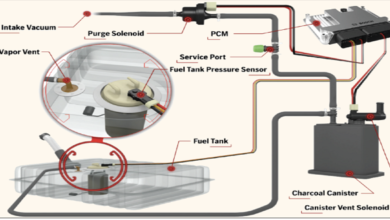Automobile Signaling Circuits Rear Wiper System

Introduction
Direction indicators have a number of statutory requirements. The light produced must be amber, but the indicators may be grouped with other lamps. The flashing rate must be between one and two per second with a relative ‘on’ time of between 30 and 57%. If a fault develops, this must be apparent to the driver by the operation of a warning light on the dashboard.
The fault can be indicated by a distinct change in frequency of operation or the warning light remaining on. If one of the main bulbs fails then the remaining lights should continue to flash perceptibly. Legislation exists as to the mounting position of the exterior lamps, such that the rear indicator lights must be within a set distance of the tail lights and within a set height. The wattage of the indicator light bulbs is normally 21 W at 6, 12 or 24 V as appropriate.
Brake lights fall under the heading of auxiliaries or ‘signaling’. A circuit is examined later in this section.
Flasher units
Shows the internal circuit of an electronic flasher unit. The operation of this unit is based around an integrated circuit. The type shown can operate at least four 21 W bulbs (front and rear) and two 5 W side repeaters when operating in hazard mode. This will continue for several hours if required. Flasher units are rated by the number of bulbs they are capable of operating. When towing a trailer or caravan the unit must be able to operate at a higher wattage. Most units use a relay for the actual switching as this is not susceptible to voltage spikes and also provides an audible signal.
The electronic circuit is constructed together with the relay, on a printed circuit board. Very few components are used as the integrated circuit is specially designed for use as an indicator timer. The integrated circuit itself has three main sections.
The relay driver, an oscillator and a bulb failure circuit. A Zenger diode is built in to the IC to ensure constant voltage such that the frequency of operation will remain constant in the range 10–15 V. The timer for the oscillator is controlled by R1 and C. The values are normally set to give an on–off ratio of 50% and an operating frequency of 1.5 Hz (90 per minute).
The on–off signals produced by the oscillator are passed to a driver circuit, which is a Darlington pair with a diode connected to protect it from back-EMF as the relay coil is switched on and off.
Brake lights
Shows a typical brake light circuit. Most incorporate a relay to switch the lights, which is in turn operated by a spring-loaded switch on the brake pedal. Links from this circuit to cruise control may be found. This is to cause the cruise control to switch off as the brakes are operated.
Other auxiliary systems
This consequently makes sirens and melody type fanfare horns illegal! Most horns draw a large current, so are switched by a suitable relay. The standard horn operates by simple electromagnetic switching. As current flow causes an armature that is attached to a tone disc to be attracted to a stop, a set of contacts is opened. This disconnects the current allowing the armature and disc to return under spring tension. The whole process keeps repeating when the horn switch is on. The frequency of movement and hence the fundamental tone is arranged to lie between 1.8 and 3.5 kHz.
Last word
When twin cooling fans and motors are fitted, they can be run in series or parallel. This is often the case when air conditioning is used as the condenser is usually placed in front of the radiator and extra cooling air speed may be needed.




